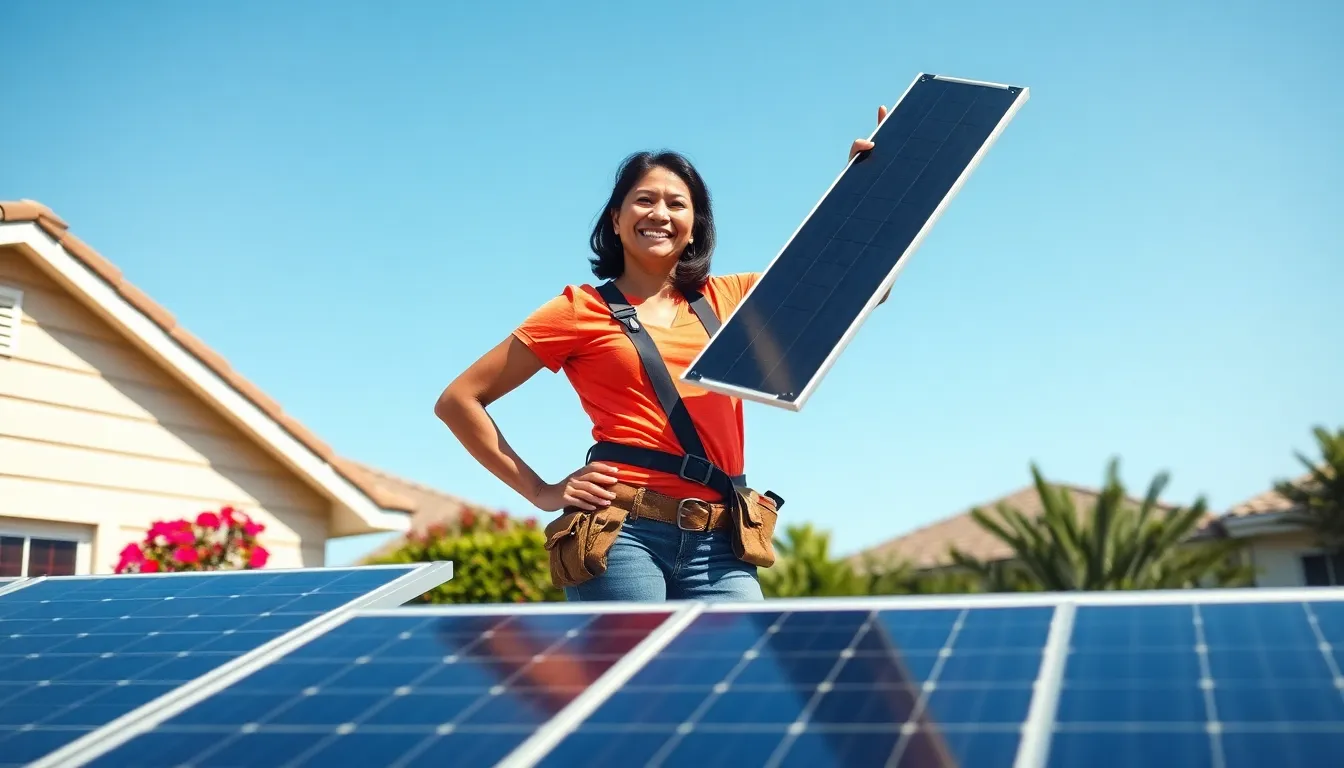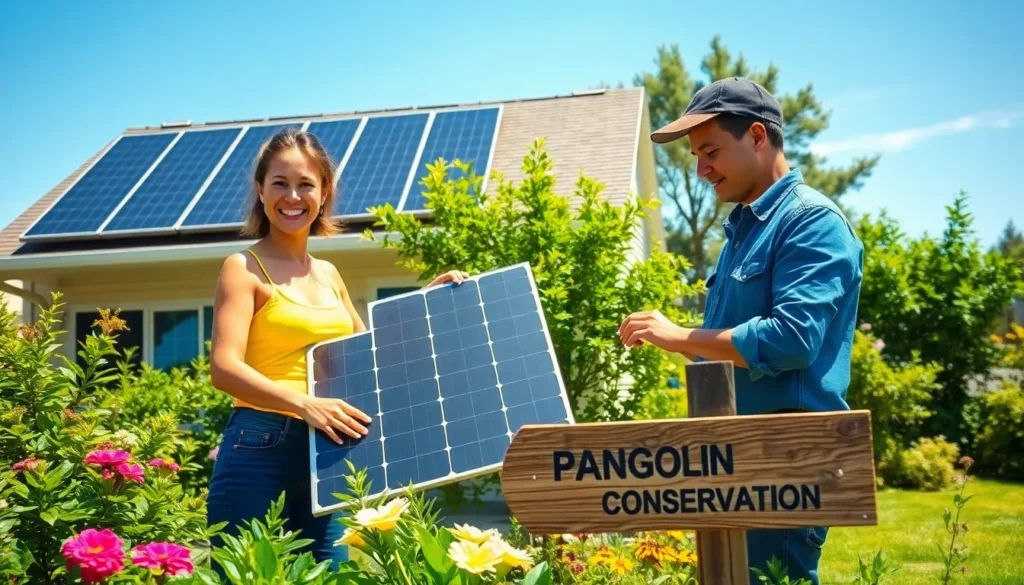Table of Contents
ToggleAs homeowners increasingly seek sustainable energy solutions, DIY solar projects have taken center stage. Not only can these projects significantly reduce energy costs, but they also contribute to global conservation efforts. This article explores the intersection of DIY solar energy initiatives and pangolin conservation, a unique try that highlights the symbiotic relationship between human innovation and nature preservation.
Understanding DIY Solar Energy for Homeowners

DIY solar energy systems empower homeowners to harness renewable energy directly from the sun. By installing solar panels on rooftops, people can generate their own electricity, reducing reliance on grid power and diminishing energy costs. Understanding the components involved, including solar panels, inverters, and batteries, is the first step for those venturing into this sustainable option.
The process begins with assessing energy needs. Homeowners need to calculate their average electricity consumption to determine how much solar energy is required. Generally, a basic system consists of solar panels that convert sunlight into electricity, an inverter that changes the generated direct current (DC) into alternating current (AC), and batteries for storing energy.
Also, most homeowners in the U.S. can benefit from tax incentives and rebates, which significantly lessen upfront costs and enhance the appeal of DIY solar projects.
Benefits of DIY Solar Installations
DIY solar installations come with a variety of benefits beyond financial savings. First and foremost, they promote energy independence. Homeowners can generate their own power, leading to less vulnerability to rising utility rates and energy shortages.
Also, the environmental impact is noteworthy. By switching to solar energy, homeowners are reducing their carbon footprint and utilizing a clean, renewable resource. This shift contributes to reducing fossil fuel dependence and mitigating climate change. For those with an environmental conscience, DIY solar installations represent a proactive step toward sustainability.
Besides, DIY solar projects can enhance property value. Homes equipped with energy-efficient systems are often more appealing to buyers, potentially translating to a higher resale value. According to recent studies, homes with solar installations can command a premium of up to 4.1% higher than non-solar counterparts.
Pangolins: Nature’s Unique Creatures and Their Conservation
Pangolins are remarkable creatures known for their unique scales and burrowing habits. These mammals, often likened to living art pieces, are found in Asia and Africa, and are the most trafficked mammals in the world, primarily due to poaching for their scales and meat.
Conservation efforts are desperately needed to protect pangolins, especially as their populations dwindle alarmingly. Organizations worldwide are working tirelessly to combat illegal trafficking and promote habitat preservation. This includes efforts to educate local communities and support sustainable land practices that benefit both wildlife and human populations.
Integrating Solar Energy with Pangolin Conservation Efforts
Linking DIY solar energy initiatives with pangolin conservation presents a compelling opportunity. By utilizing solar power in conservation projects, organizations can significantly reduce operating costs, allowing more funding to go directly to conservation efforts.
For example, solar-powered ranger stations can be established within pangolin habitats to monitor wildlife and combat poaching. These stations can be equipped with renewable energy sources to operate cameras and other monitoring equipment without relying on fossil fuels.
Also, communities engaged in pangolin conservation can benefit from solar energy, which enhances their quality of life while also supporting conservation efforts. Access to solar-generated electricity improves educational facilities, healthcare services, and local businesses, creating a virtuous cycle that promotes both human and environmental well-being.
Step-by-Step Guide to a DIY Solar Setup
Setting up a DIY solar system involves several steps:
- Plan Your Project: Research local regulations and incentives. Understand your energy needs and what system size works for you.
- Choose Your Components: Select solar panels, an inverter, and batteries suited to your design. Look for reviews and recommendations from other DIY enthusiasts.
- Gather Tools and Materials: Beyond the solar equipment, you’ll need tools like a drill, wiring tools, and mounting brackets.
- Installation: Begin with installing the mounts on your roof, followed by the solar panels. Ensure all components are securely connected per manufacturer instructions.
- Connect the System: Link the solar panels to the inverter and battery storage while ensuring all wiring is correct and safe.
- Test the System: Before finalizing, ensure the system is functioning as intended. Monitor performance to ensure optimal energy production.
Common Challenges and Solutions in DIY Solar Projects
Some common challenges include permitting issues, weather-related delays during installation, or unexpected costs. Solutions involve thorough planning, engaging experts for guidance, and utilizing online resources and communities where experienced users share insights.
By addressing these challenges upfront, homeowners can navigate the DIY process more smoothly.
Future Trends in DIY Solar Energy and Conservation
The future of DIY solar energy looks promising, driven by technological advancements and increasing public awareness about sustainability. Innovations such as solar shingles and enhanced battery technologies are making solar energy more accessible and appealing to homeowners.
Also, a growing number of companies are offering kits that simplify the installation process, catering especially to novice DIYers. This accessibility encourages more individuals to participate in renewable energy initiatives.
In tandem with this growth, conservation initiatives focusing on endangered species like pangolins are likely to integrate more green technologies. As communities demand sustainable practices, partnerships between renewable energy providers and wildlife conservation organizations will strengthen, creating a broader impact on both human and ecological health.
Conclusion
The conjunction of DIY solar installations and pangolin conservation represents a forward-thinking approach to sustainable living. Homeowners not only decrease their energy costs while benefiting the environment, but they also support global efforts to protect unique wildlife like pangolins. By embracing renewable energy solutions, individuals contribute to a greener future, while also playing a vital role in preserving the planet’s biodiversity. A commitment to DIY solar caters to broader conservation efforts, championing an ethical way of living that respects both people and the planet.





